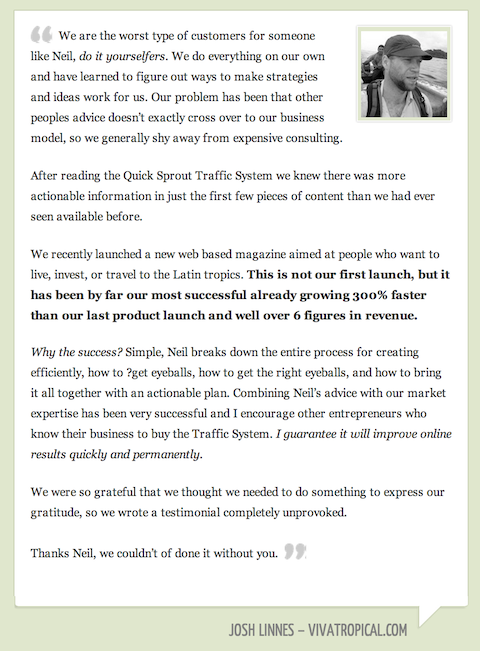Why E-Commerce Is Tough and What to Do about It

SFGate.com’s Kevin Fitchard has an excellent piece on Square Market — the online marketplace, which Jack Dorsey and company launched earlier this year. The author tells us that a fifth of the processor’s 500,000 merchants are relying exclusively on Market and have never used the Square reader for accepting card payments in person — an amazing statistic for a company, which most observers — this blogger very much included — still view as exclusively a processor of point-of-sale (POS) payments. However, as Fitchard is quick to point out, most of the merchants who do use Market make no sales at all on the platform, but are using it solely for marketing purposes. So Square is not about to eat PayPal’s lunch quite yet.
Still, the fact that tens of thousands of merchants, many of them of very good size, would choose to forgo building and managing their own websites in favor of a third-party service, which, though sleek, reliable and free, is quite rudimentary in comparison to a full-fledged e-commerce platform, is fascinating. After all, doing so is tantamount to trusting someone else with the keys to your business. So why are so many merchants doing it? Well, there is only one real reason, but it’s a big one — e-commerce is tough. Yes, building and managing a website is easy — these days you can get a really good online store up and running for only a few thousand dollars and dependable dedicated hosting is getting cheaper by the month — but making it discoverable for potential customers is incredibly difficult. And if people can’t find your store, it doesn’t matter how good your product is — you’re out of business.
At UniBul we’ve been dealing with this very issue for many years now and have been quite successful at bringing merchants to our website. In fact, I believe that we have the most popular site among payment companies of our size. So today I decided to share with you what’s worked for us over the years and, more importantly, what is working today. Yes, it is somewhat outside the remit of this blog, but I feel that I’ve learned enough about the subject to give a quick read.
Getting Customers to Come to You
So, once again, building a product and website, identifying customer groups, devising a pricing strategy, etc. don’t mean a thing, unless you can find a way to get the product in front of your target customers and convince them to buy it. And while specific strategies for achieving this objective would differ from one industry to another, there are certain components that could be successfully integrated into just about every such approach. Here is how I would begin marketing a business website if I had launched it today — and I assume that the website is properly designed, coded and SEO-optimized:
1. Publishing long, detailed guides. I would begin by creating detailed guides on topics related to whatever it is I sell. I’ve actually created several detailed guides on various subjects related to merchant services for UniBul in the past and these have generated some traffic for us (and keep doing so). However, HubSpot and, especially, QuickSprout’s Neil Patel opened my eyes to the true potential of what a really well-done guide can do. Having closely watched the rise of QuickSprout’s traffic over the past three or four years, it has become plainly clear to me that the three advanced guides Patel has (so far) produced in 2013 have been by far his most successful traffic-generating tool. In fact, he wrote about the experience. Here is what Alexa tells us about QuickSprout’s performance since the beginning of 2012:

Patel tells us that his Advanced Guide to SEO generated 1,371 tweets, 1,052 likes and 120 comments on Facebook. Most importantly, as of the end of June and four months after its publishing, over 212,584 people had read the guide. The statistics for the other two guides are even more impressive. For example, the second guide — The Advanced Guide to Content Marketing — generated fewer likes (677) and tweets (871), but it did do vastly better on the statistic that actually counted — 361,494 visitors. So this is huge.
Patel goes into some detail in explaining how he goes about producing the guides, but there is nothing really special about it — he breaks down the subject at hand into its major components, analyzes the hell out of each one of them and then packages the whole thing into a very nice design. Most importantly, however, Patel is able to market each guide very effectively — he tells us that Moz emailed its user base about one of his guides, which drove more traffic than Twitter and Facebook did combined and he did the same thing with “a few” other popular blogs.
If I were starting a business website today, I would be publishing such guides every three months or so — it is a hugely time-consuming process — and then market them any way I can. If the quality is sufficiently high, there is a very good chance that the biggest blogs in my industry would agree to write about them. I expect that QuickSprout results could be replicated.
2. Creating free marketing tools. This is another very successful marketing ploy utilized by HubSpot through the company’s “Grader” set of tools. Initially, HubSpot had separate tools for grading websites, Twitter and Facebook accounts, press releases, inbound links, etc. but now they seem to have only one — the “Marketing Grader“, which combines them all into one to rate a website on several metrics: blogging, social media, SEO, lead generation and mobile. For the most part, HubSpot’s Marketing Grader collects information that is freely available on the web and presents it as a single report. For example, the “Social Media” section tells you how many Twitter followers the account linked to your website has, how many Twitter users it is following, recent activity, etc. The “SEO” section tells you how many indexed pages the website under examination has, what its MozRank is, how many tweets and inbound links it has received, etc. As I said, these are all things that are freely available elsewhere. Furthermore, the tool isn’t all that accurate. For example, it wasn’t able to locate either our blog’s Twitter account or its Facebook account. Yet, HubSpot tells us that, as of January 2010 and less than three years after its launch, its marketing tool had graded over 2 million website URLs. We don’t know how many emails the company has collected or what its conversion rate is, but this is a huge number, any way you look at it.
Once again, however, Neil Patel gives us much needed details. He recently launched his own free website analyzer and, in the first four days, 17,747 people have run 22,562 URLs through it. Here is Patel’s own account of the tool’s early impact:
Before I launched the tool, Quick Sprout received 1.8 pageviews per visitor and had a bounce rate of 74%. In addition to that, 65% of the visitors were first time visitors, who stayed on the site for 2 minutes and 10 seconds.
After I launched the tool, each visitor viewed 2.35 pages. The bounce rate was 63%. The loyalty of each visitor also increased as the percentage of new visitors dropped down to 57%, and they stayed on the site for 3 minutes and 10 seconds.
And what about the tool’s ROI? Here is Patel again:
So far I have spent $45,000 building the tool. To finish off the rest of the features will roughly cost me $60,000 more. That means the total cost to build everything I want would be $105,000.
Before I created this tool, I created three other software companies for marketers, and I bought one. Based on my experience of creating products for marketers, I should easily be able to convert 2% of the people who put in a URL into paid plan subscribers at $97 a year for extra features.
Assuming I can maintain at least 30,000 unique people entering in URLs through the system each month, a 2% conversion rate would mean 600 paid customers each month. At a price point of $97 per year, that would generate $58,200 in revenue each month.
People love such grading tools and companies that go into the trouble of producing them do reap substantial benefits. I would create a tool that incorporates the features available in HubSpot’s and QuickSprout’s, but one that focuses on the most important metrics in my industry. Again, having created the tool, I would mercilessly promote it on my blog and Facebook, Twitter and Google Plus accounts, but would really pound on my industry connections (LinkedIn is the perfect place to do that) and relevant blogs. If done the right way, this thing would more than pay for itself.
3. Giving out free products for promotional purposes. This works best for businesses selling services, but with some creativity it could also be successfully applied for products as well. Once I’ve finished the website, I would offer free accounts to all of the popular websites and blogs in my space. If you already have contacts with some journalists and bloggers, they can be used as a starting point. Otherwise, now is the time to start reaching out and LinkedIn would again be a good place to start. If I were selling a service, I would happily spend time with those who respond to my offer, helping them set up their accounts and making sure they understand how to use them.
The most important part of the exercise is to ensure that my bloggers and journalists understand the benefits of using my service. Otherwise, this is not going to work. The objective is to get a portion (it would probably be a small one) of the contacted bloggers and journalists to set up an account, use it and, once they get the concept and like it, to write about it. However, I would not make writing a post about my service a precondition to giving away a free account.
4. Forming business partnerships. This has worked well for us over the years. Rather than re-create the wheel, we have partnered with a number of other companies. The objective has always been to compensate each other’s weak points. For example, we’ve always been good at sales, whereas some of our partners have had long-established relationships with specialized banks and other service providers, which we’ve lacked.
Additionally, you can try convincing an established company in your industry to incorporate your offering into its own. One possibility would be to arrange for all new clients of your established partner to get a free trial account for your service. Then, for those clients who become paying clients, the partner would be getting a cut of the revenue (say, 30 percent; it has to be generous enough to peak the prospect’s interest).
5. Using case studies and testimonials. As soon as you have had paying customers for a couple of months, you should start working on case studies of two or three of them. These would be very detailed, describing exactly what you did for the examined company, talking not just about the end result, but explain (in non-technical terms) precisely what you did to achieve these results. Additionally, client testimonials should be integrated into the case studies to back up your claims. These testimonials should be detailed and specific, not just a this-company-did-a-marvelous-job-for-us type of thing. Neil Patel offers a perfect example, which I have pasted below.

In addition to being very detailed, the case studies should be beautifully designed — you can never, ever make a sales material too pleasing to the eyes. Once again, Patel offers great examples, and ready templates, here, here and here (these are too big to paste here). Full use should be made of both the testimonials and the case studies on your website and blog, but they should also be used in email campaigns and in regular email exchanges with prospective clients.
6. Start blogging. If done the right way, blogging could be the top channel for generating leads for you. On the other hand, if done the wrong way, it could prove to be a huge waste of time and resources. So how should it be done? I’ve actually written at length a couple of times before on the subject here and here and would encourage you to read these posts.
The Takeaway
I’ve argued before that traditional SEO is a waste of time — and it is. Yes, your website and blog should be well optimized for search engines — things like title tags, meta descriptions, keyword density and positioning, image alt texts, etc. should all be properly done. But nowadays that’s easy to do — we use WordPress, which offers a host of plug-ins to get the job done. More importantly, if you get too hung up on SEO, especially on the off-page variety (i.e. link building), you run the substantial risk that at some future point, when Google changes some policy or other (it happens often), you will be punished for overdoing it and for generally not complying with the new rules. It’s happened to us, as it has to millions of other websites and it’s no fun. That is the reason your strategy should revolve on implementing tactics, which are independent of Google’s whims, such as the ones I’ve suggested in this post. It is by no means a comprehensive list, but it does work.
Image credit: Square.


